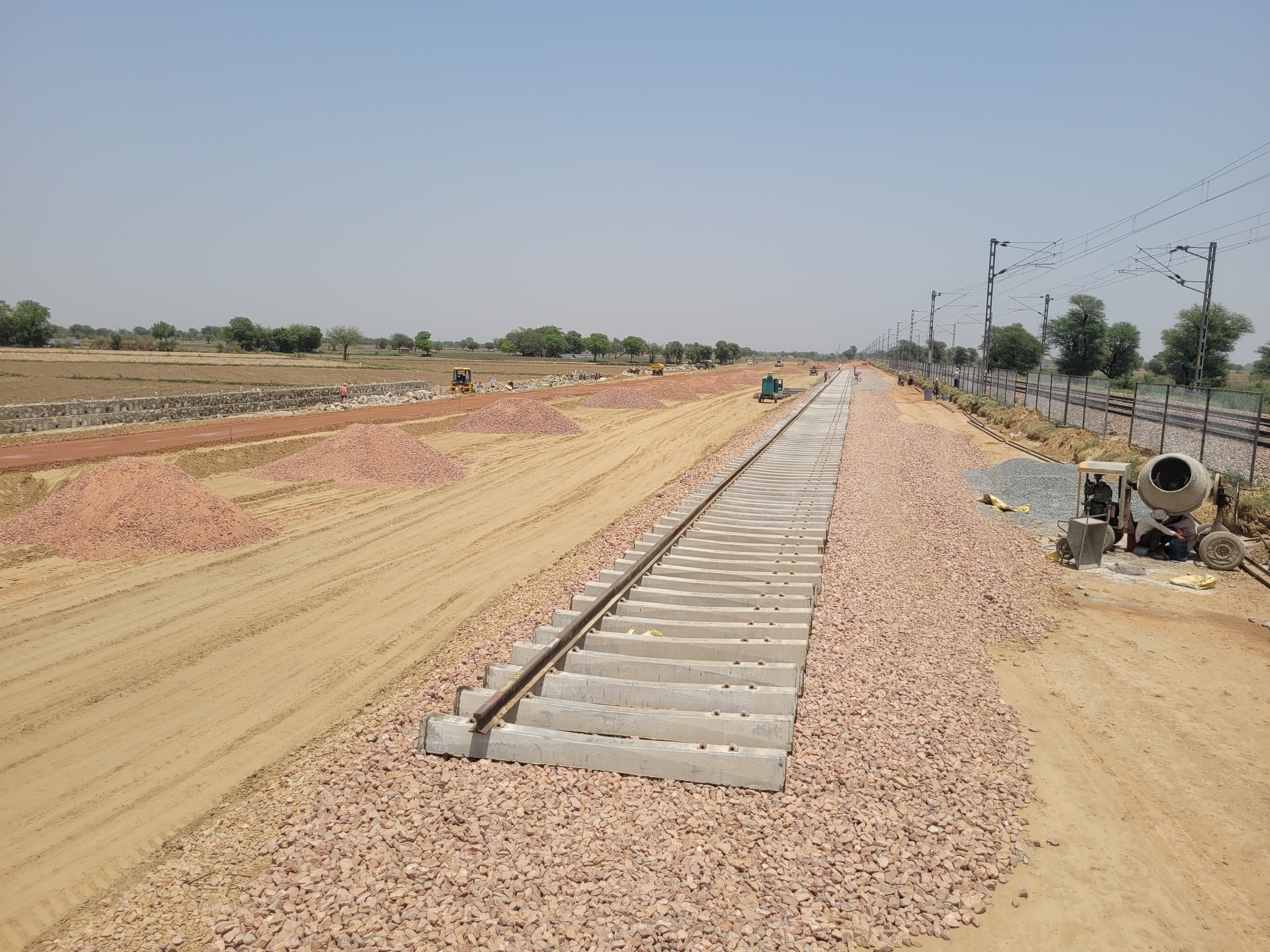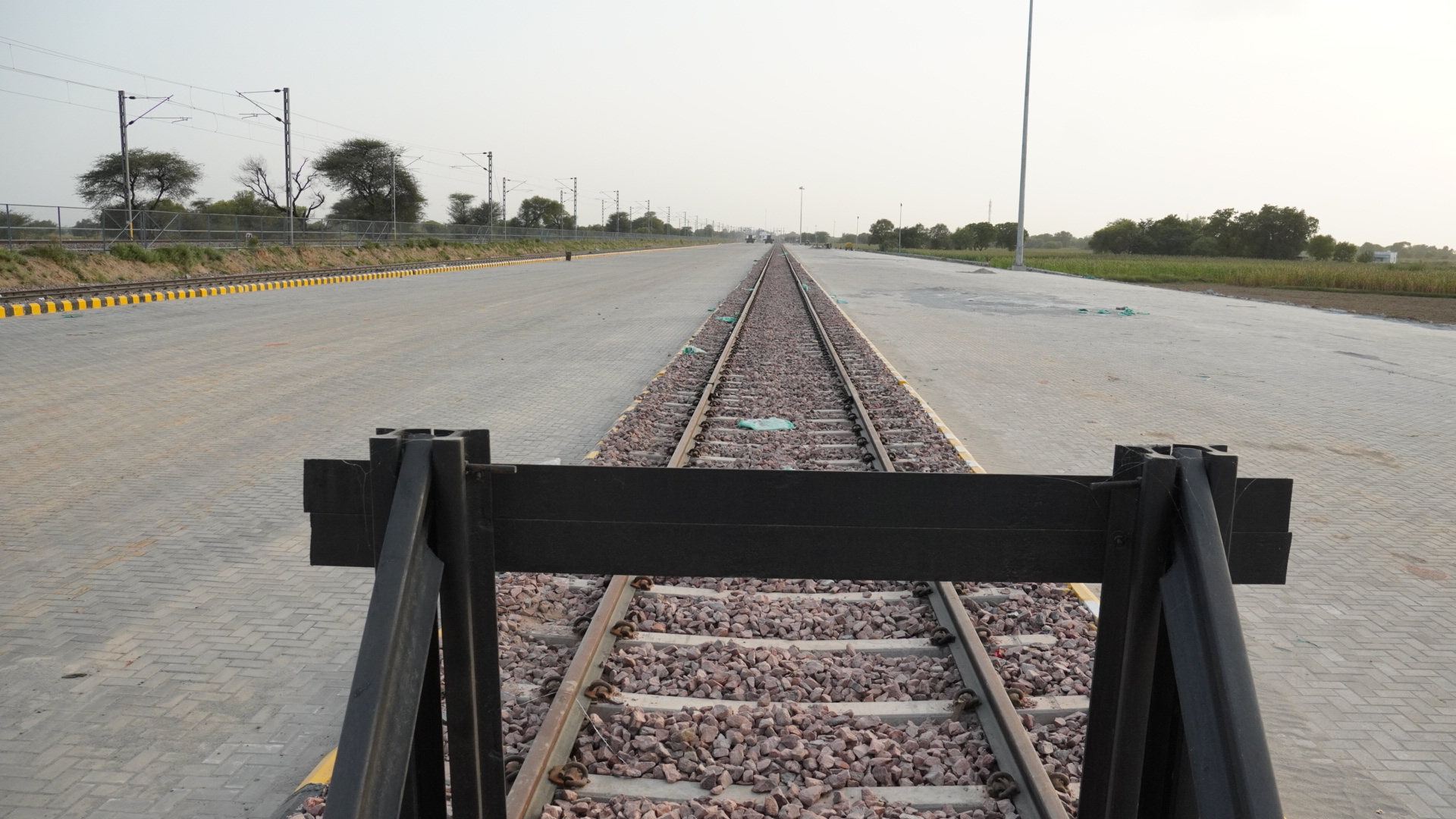Revolutionizing Logistics with First Greenfield Gati Shakti Multi-Modal Cargo Terminal on Indian Railway Land, Indian Railway, under the Gati Shakti Masterplan for Multimodal Connectivity launched by Hon’ble Prime Minister Shri. Narendra Modi took the initiative of inviting private investment for developing terminals on Railway Land under the liberalised land usage regime.
The Inchhapuri Gati Shakti Cargo Terminal, situated at Inchhapuri Station on the Gurugram-Rewari section of the Delhi Division of Nothern Railway, is set to become the first greenfield Gati Shakti Multimodal Cargo Terminal (GCT) of the Delhi Division. This terminal is poised to usher in a new era of efficient and sustainable rail transportation in National Capital Region (NCR).
J M Baxi Ports & Logistics Ltd (JMBPL) has successfully established the greenfield Inchhapuri GCT in an impressive time frame of 8 months, surpassing the initial 18-month projection set by the railways. This achievement was made possible through a Concession Agreement between JMBPL and the Delhi Division of Northern Railway (NR). This multimodal cargo terminal marks a significant milestone for both JMBPL and Delhi Division of NR in revolutionising efficient and sustainable multimodal cargo transporattaion in the NCR.
It is expected that proliferation of such Gati Shakti terminals across the Indian Railway Network will help provide intermodal transportation solutions for domestic trade in the manufacturing sector of India, ultimately reducing logistics costs.
Phases of Transformation
The Inchhapuri terminal development is divided into strategic phases, with a commitment to operational readiness by September 2023. The first stage of development includes the establishment of essential infrastructure as outlined:


- Rail Siding: The terminal will feature two state-of-the-art rail sidings, designed to facilitate seamless loading and unloading of cargo containers onto trains.
- 12,000 sqm Platform Area : This area is designated for the efiicient handling of containers.
- Paved Stacking Area : Covering 15,000 sqm, this area will be used for the storage of containers.
- Terminal Approach Road: A heavy duty bituminous approach road has been constructed to provide access to the terminal from existing district road.
- Railway Services Building: The Railway Services building will house the FOIS and TMS Terminals and provide office accommodation for railway staff.
- Electronic in Motion Weighbridge: A 140-ton capacity Electronic In-Motion Weigh Bridge (EIMWB), will facilitate weighing of trains carrying containers to ensure safety and accurate freight computation.
- Enhanced Yard Illumination: The entire yard is well illuminated and enclosed by chain-link fencing for enhanced security and visibility.
Equipment and Capacity
This Gati Shakti Terminal is expected to have an annual capacity of 100,000 TEU. The terminal will be equipped with modern handling and transportation equipment for quick evacuation of containers.
Operational Benefits of Inchhapuri Terminal
The Inchhapuri terminal's capabilities are poised to transform operations in several ways:
- Reduced Transit Time: By reducing the turnaround time (TAT) for double stack trains between gateway ports and the Dedicated Freight Corridor (DICT) via Inchhapuri, efficiency will increase, leading to quicker movement of goods and a more streamlined trade process.
- Handling Increased Capacity: State-of-the-art infrastructure at the terminal will significantly boost its capacity to handle a larger number of double stack trains compared to current handling capacities. This enhancement is a testament to the terminal's commitment to accommodating the ever-growing demands of the industry.
- Export Potential (Outward Double Stack Trains): A groundbreaking advancement on the horizon is the planned handling of outward double stack trains carrying exports. This crucial addition, previously unavailable from other locations, opens new possibilities for exporters and further cements the terminal's role in reshaping the trade landscape.
- Savings through Reduced Dwell Time: By reducing dwell time for import containers, the Inchhapuri Inland Container Terminal promises to minimize Port Ground Rent charges (PGR), resulting in savings for stakeholders and efficient resource allocation.
- Improved Customer Satisfaction: The terminal's advanced will address a long-standing challenge— containers arriving at DICT in separate parts of the same Bill of Lading (BL), ensuring smoother and more consolidated cargo delivery.
- Smoother Customs Process: Part container delivery requests to customs are expected to decrease significantly, streamlining customs procedures and minimizing complexities in cargo handling. This improved process will expedite the movement of goods.
- Collaborative Platform by Supporting Multiple CTOs: Inchhapuri Inland Container Terminal will not be limited to its own operations; it will also function as a platform to handle double stack trains and domestic trains for other Container Train Operators (CTOs). This collaborative approach enhances efficiency across the board and contributes to the industry's overall profitability.
- Scaling Up Volume: As the TAT of trains improves, the terminal's capacity to handle a larger volume of cargo per month will rise exponentially. This capacity boost further positions the Inchhapuri Inland Container Terminal as a pivotal player in driving efficient trade practices.

Overcoming Obstacles: Challenges Faced During the Construction Phase
In the ambitious endeavour to establish the first Gati Shakti Cargo Terminal on railway land, numerous challenges were encountered and skilfully mitigated through careful coordination, meticulous planning and a commitment to sustainable development. This has resulted in completion of the project in record time.
Here are some key highlights of this remarkable achievement:
1. Seamless Coordination and Pre- Planning
- Coordination between the project team and railways was key due to land ownership by Railways and the various safety and regulatory aspects.
- Early planning ensured mobilization of resources before the targeted construction commencement.
- A strategic approach involved local villages in clearing dense bush scrub vegetation and a buffer zone from cultivated land.
2. Time Constraints
- The construction period coincided with the crop harvesting season, leading to a scarcity of land-filling material. Innovative strategies were implemented to secure the necessary materials while July - September 2023 Newsletter Issue XLII11 minimising the disruption to ongoing agricultural activities.
- Challenges posed by the monsoon season were addressed through adaptable strategies to mitigate weather-related delays and ensure project continuity.
- Civil unrest in Haryana affected labour availability, intensifying pre- existing challenges. Disruptions in government offices and strikes led to delays in obtaining regulatory clearances and permissions from the pollution control board.
3. Embracing Sustainable Development
A sustainable approach was adopted through various measures:
- Distribution of cleared bush scrub vegetation to villagers for use as local firewood.
- Replanting of trees in the designated construction area, to enhance the local ecosystem.
- Extension of rail bridges and underpassesto facilitate villagers movement and enhancing access.
- Reconstruction of a Divyang ramp towards station building, away from in the approach road, enhancing accessibility.
Future Expansion
J M Baxi Ports & Logistics is dedicated to delivering efficient, dependable, and environmentally conscious multimodal transportation services for the industry. The company is poised to embark on the terminal's second development phase, aimed at expediting train arrivals and departures from Inchhapuri Terminal, and providing additional container yard for in-transit storage of multimodal cargo. The Inchhapuri GCT Terminal established by J M Baxi Ports & Logistics has already garnered substantial attention from the NCR trade, as it synergizes with the Western Dedicated Freight Corridor, bringing both speed and cost advantages to the trade.
